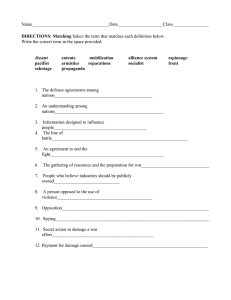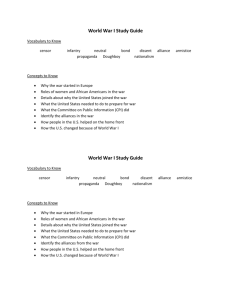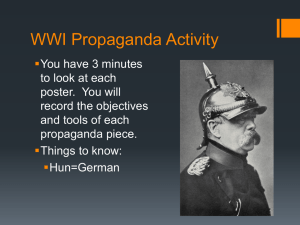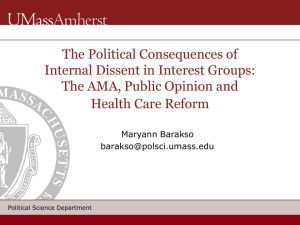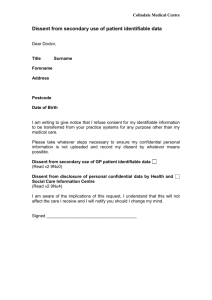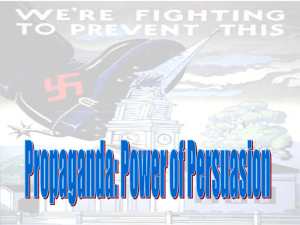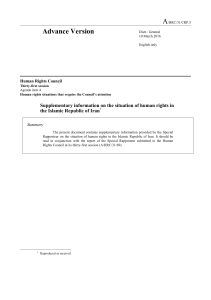America and the Great War, 1914-1920 Lecture-Reading Notes 2 (p. 197-202)
advertisement
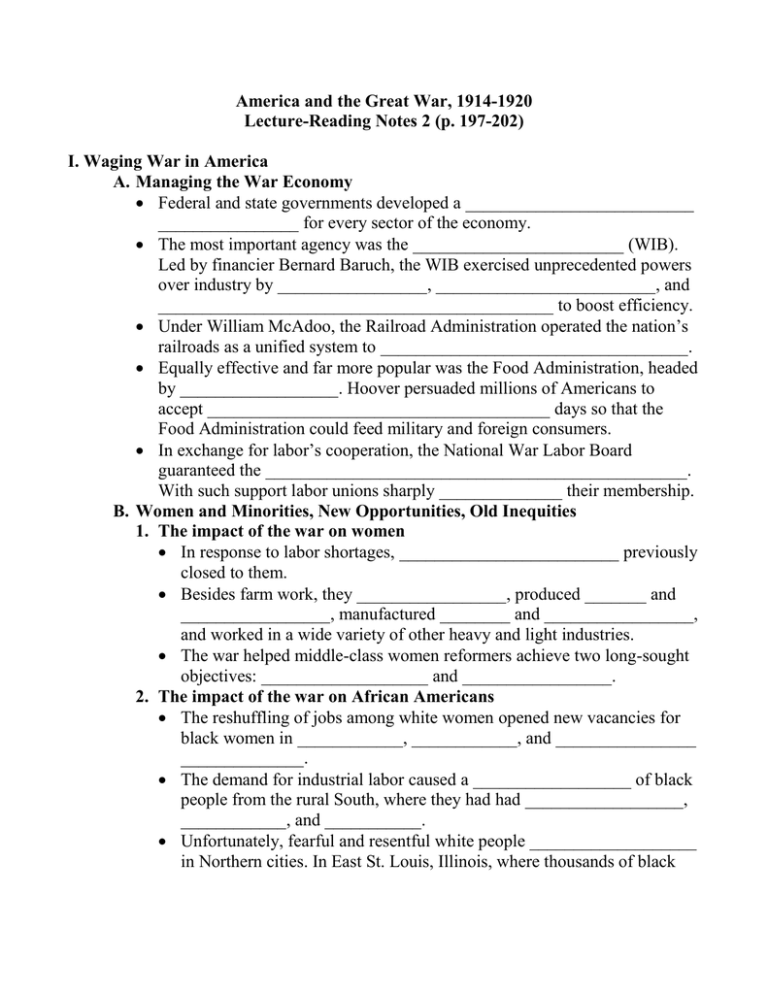
America and the Great War, 1914-1920 Lecture-Reading Notes 2 (p. 197-202) I. Waging War in America A. Managing the War Economy Federal and state governments developed a __________________________ ________________ for every sector of the economy. The most important agency was the ________________________ (WIB). Led by financier Bernard Baruch, the WIB exercised unprecedented powers over industry by _________________, _________________________, and _____________________________________________ to boost efficiency. Under William McAdoo, the Railroad Administration operated the nation’s railroads as a unified system to ___________________________________. Equally effective and far more popular was the Food Administration, headed by __________________. Hoover persuaded millions of Americans to accept _______________________________________ days so that the Food Administration could feed military and foreign consumers. In exchange for labor’s cooperation, the National War Labor Board guaranteed the ________________________________________________. With such support labor unions sharply ______________ their membership. B. Women and Minorities, New Opportunities, Old Inequities 1. The impact of the war on women In response to labor shortages, _________________________ previously closed to them. Besides farm work, they _________________, produced _______ and _________________, manufactured ________ and _________________, and worked in a wide variety of other heavy and light industries. The war helped middle-class women reformers achieve two long-sought objectives: ___________________ and _________________. 2. The impact of the war on African Americans The reshuffling of jobs among white women opened new vacancies for black women in ____________, ____________, and ________________ ______________. The demand for industrial labor caused a __________________ of black people from the rural South, where they had had __________________, ____________, and ___________. Unfortunately, fearful and resentful white people ___________________ in Northern cities. In East St. Louis, Illinois, where thousands of black Southerners sought defense work, a white mob in July 1917 murdered at least _____________ black people. C. Financing the War To finance the war, the government ________________________________. The tax laws of 1917 and 1918 established a _____________________ with increased taxes on large incomes, corporate profits, and wealthy estates. Most of the loans came from _______________________________, but the government also campaigned to sell _______________ to the general public. D. Conquering Minds 1. The Committee for Public Information To rally Americans behind the war effort, Wilson established the Committee on Public Information (CPI) under ___________________. Despite its title, the CPI sought to _____________, ______________, public opinion. The CPI flooded the country with _______________, _______________, cartoons, and canned editorials. 2. The Department of Educational Propaganda and Patriotic Education The ______________________________________________ established the Department of Educational Propaganda and Patriotic Education. This agency worked to win over women who _____________________. 3. The themes of government propaganda Government propaganda had three themes: __________________, the _____________________, and the war as a grand crusade for _________ and _____________. Germans were depicted as brutal, _____________, ____________ and ______________. The campaign suggested that any dissent was ________________, if not _______________, and dangerous to national survival. E. Suppressing Dissent 1. Congressional legislation against dissent The ___________________ provided heavy fines and up to twenty years in prison for __________________________, a vague phrase but one “omnipotently comprehensive,” warned one Idaho senator who opposed the law. In 1918, Congress passed the still more sweeping __________________. Based on state laws in the West designed to suppress labor radicals, the Sedition Act provided severe penalties for speaking or writing against the ___________, ________________, or ________________ or for criticizing ______________________________________. 2. The impact of suppression on leading radicals The reactionary attorney general, Thomas Gregory, made little distinction between ___________ and ____________, ____________, and ____________. ____________________ was sentenced to ten years in prison for a “treasonous” speech in which he declared it “extremely dangerous to exercise the _________________________ in a country fighting to make democracy safe in the world.” By war’s end, ________________ of the Socialist party’s national leadership was in prison, leaving the party in shambles. 3. State and local efforts to suppress dissent State and local authorities established 184,000 investigating and enforcement agencies known as ____________________ or __________ _______________________. They encouraged people to spy on one another, required people to buy ___________________, and prohibited ________________________ or using the language in religious services and _______________________.
